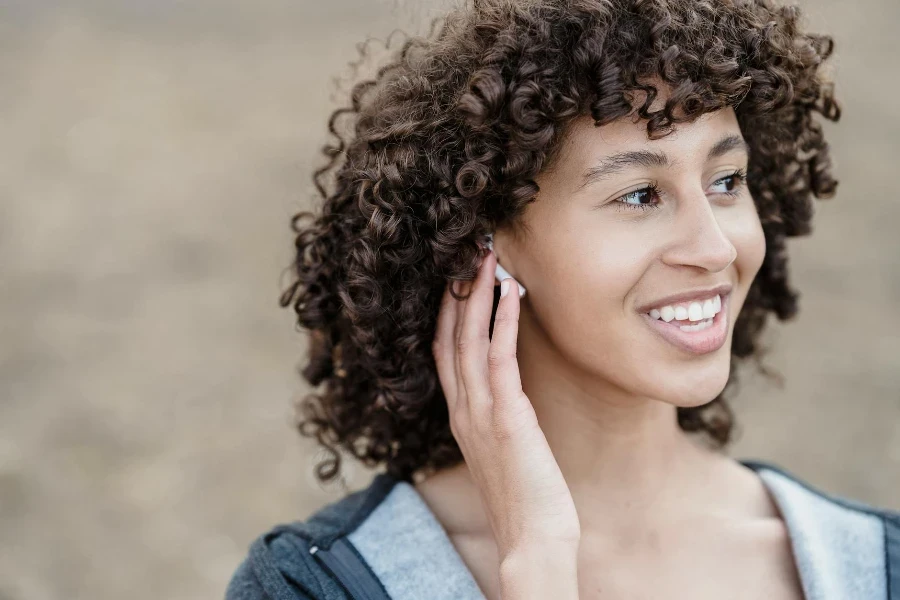In the ever-evolving landscape of consumer electronics, earbud and in-ear headphones have carved a niche for themselves, offering unparalleled convenience and audio fidelity. This comprehensive guide aims to demystify the technical aspects and highlight the considerations you should make before purchasing your next pair. Whether you’re a casual listener or an audiophile, understanding the nuances of these devices will enhance your audio experience.
Table of Contents:
– Understanding the technology behind earbud & in-ear headphones
– Sound quality and performance
– Comfort and fit
– Battery life and connectivity
– Durability and water resistance
Understanding the technology behind earbud & in-ear headphones

Earbud and in-ear headphones have undergone significant technological advancements over the years. Initially, these devices were simple, offering basic sound output without any emphasis on the listening experience. However, today’s iterations are equipped with sophisticated drivers, noise-canceling capabilities, and even smart features that integrate seamlessly with your devices. This section delves into the drivers and noise cancellation technology that are pivotal in delivering superior sound quality.
Noise cancellation technology has become a standard in high-quality earbuds and in-ear headphones. Active Noise Cancellation (ANC) works by using microphones to pick up external sounds and then producing opposite sound waves to cancel them out. This technology is particularly beneficial in noisy environments, allowing you to immerse yourself in your music or podcasts without interruption.
Furthermore, the drivers in these headphones have evolved. Drivers are essentially the speakers within your headphones and are responsible for converting electrical signals into sound. Larger drivers typically deliver better sound quality, but with the compact size of earbuds and in-ear headphones, manufacturers have had to innovate to achieve high-quality audio output. This has led to the development of multiple-driver systems that can produce a wide range of frequencies from deep bass to high treble without distortion.
Sound quality and performance

When it comes to earbud and in-ear headphones, sound quality and performance are paramount. Audiophiles look for devices that offer a balanced sound profile, with clear highs, mids, and lows. The presence of a soundstage, where the audio feels like it’s coming from around you rather than directly from the earpieces, enhances the listening experience, making it more immersive.
Codec support plays a crucial role in sound quality. Codecs are compression algorithms that encode and decode digital audio data. High-quality codecs like AAC, aptX, and LDAC ensure that there is minimal loss in sound quality during transmission from your device to your headphones, maintaining the integrity of high-resolution audio files.
Latency is another factor that affects performance, especially for gamers and those who watch a lot of videos. Latency refers to the delay between the audio being played on your device and when you hear it. Lower latency ensures that audio is synced with the video, providing a seamless viewing experience.
Comfort and fit

For many users, the comfort and fit of earbud and in-ear headphones are just as important as sound quality. A poor fit can lead to discomfort, ear fatigue, and even the headphones falling out, which is especially problematic during physical activities like running or working out.
Ear tips are a critical component in achieving a good fit. They come in various materials, including silicone and memory foam, each offering different levels of comfort and noise isolation. Memory foam tips, for example, conform to the shape of your ear canal, providing a snug fit and better passive noise isolation.
The design of the earbuds also influences comfort. Some models feature ergonomic shapes that align with the natural contours of the ear, reducing pressure points. Additionally, manufacturers often include multiple sizes of ear tips in the box, ensuring that you can find the perfect fit for your ears.
Battery life and connectivity

In the realm of wireless earbud and in-ear headphones, battery life, and connectivity are critical factors that can significantly impact user experience. Long battery life ensures that your headphones can last through multiple listening sessions without needing a charge, which is particularly important for commuters and travelers.
Bluetooth technology has seen considerable improvements in terms of power efficiency and range. The latest Bluetooth versions offer more stable connections over longer distances, reducing dropouts and ensuring that your audio experience remains uninterrupted. Moreover, features like quick charging and wireless charging have become more common, providing convenient options to keep your devices powered.
Connectivity also extends to how well these headphones integrate with your ecosystem of devices. Multipoint pairing, for example, allows you to connect your headphones to multiple devices simultaneously, making it easy to switch between your phone and computer.
Durability and water resistance

Lastly, durability and water resistance are essential considerations for earbud and in-ear headphones, especially for those who lead active lifestyles or frequently use their headphones outdoors. Materials and build quality play a significant role in the longevity of these devices. Reinforced cables, metal or high-quality plastic housings, and resistance to sweat and moisture can all contribute to a more durable product.
Water resistance is often measured by the IP (Ingress Protection) rating system, which indicates the level of protection against solids (like dust) and liquids. A higher IP rating, such as IPX7, means that the headphones can withstand immersion in water to a certain depth, making them suitable for workouts and even some water sports.
Furthermore, some manufacturers offer warranties or guarantees against sweat and water damage, providing additional peace of mind for users who frequently expose their headphones to harsh conditions.
Conclusion:
Earbud and in-ear headphones have come a long way, offering a blend of convenience, performance, and quality that can satisfy even the most discerning audiophiles. Understanding the technology behind these devices, from sound quality to durability, can help you make an informed decision that suits your lifestyle and listening preferences. Remember, the right pair of headphones can transform your audio experience, providing a soundtrack to your life that is as rich and detailed as the world around you.




